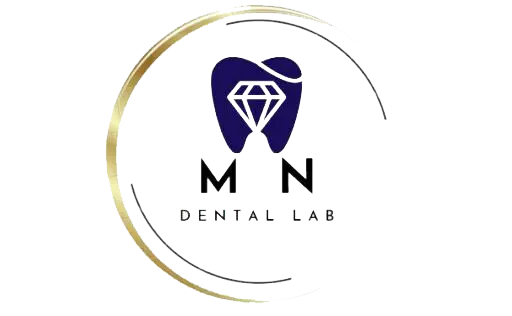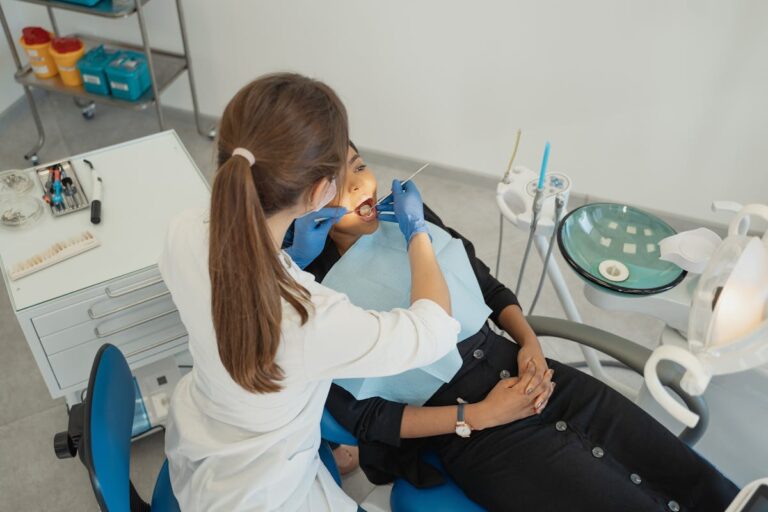The significance of expert occlusal adjustment services in maintaining impeccable dental health cannot be overstated. Considering that occlusal adjustments involve intricate, highly individualized procedures, it becomes paramount to engage with professionals who possess profound expertise in diagnosing misalignments and conducting precise adjustments with specialized tools. The utilization of such professional services opens up a world of benefits, including access to cutting-edge technology, personalized treatment plans, and consistent monitoring to guarantee efficacy. The result? Enhanced oral function and overall well-being. But what exactly makes expert occlusal adjustments a cornerstone of dental health? Let’s explore further.
Understanding Occlusal Adjustment
Occlusal adjustment, an important procedure in dentistry, involves the precise alteration of the biting surfaces of teeth to achieve ideal contact and alignment, thereby enhancing overall oral health. This process is essential for addressing bite misalignments that may cause discomfort or oral health issues. To ensure effective treatment, it’s crucial to seek expert occlusal adjustment services that can properly diagnose and treat the misalignment, using specialized tools to enhance the overall functionality and comfort of the bite.
One common misconception is that occlusal adjustment is a one-size-fits-all solution. In fact, the process is highly individualized, taking into account each patient’s unique oral anatomy and health status. Another misconception is that the adjustment is purely cosmetic. While it can indeed improve the appearance of one’s dentition, its primary purpose is to optimize oral function and alleviate discomfort caused by malocclusion.
The process of occlusal adjustment usually involves eliminating high spots on teeth, balancing biting forces, and ensuring a harmonious relationship between upper and lower teeth. This is achieved through careful examination, diagnosis, and the use of specialized dental tools.
Signs You Need Occlusal Adjustment
Recognizing the importance of occlusal adjustment is essential in maintaining excellent dental health. This section will discuss the key indicators that suggest a need for this dental intervention. We will provide a detailed overview of common symptoms, enhancing your understanding and ability to identify potential occlusal issues.
Identifying Occlusal Adjustment Need
Understanding the signals your mouth might be sending is vital in identifying the need for an occlusal adjustment. Essentially, an occlusal adjustment is a procedure that corrects the alignment of the bite. A bite diagnosis is an important part of this process, as it can reveal any misalignments that might be causing discomfort or other issues.
An experienced dental professional performs bite diagnosis, using a variety of techniques to assess the orientation of your bite. The dentist may use pressure indicating paper, digital scans, or other diagnostic tools to determine whether a patient’s teeth are meeting correctly.
Understanding the need for occlusal adjustment involves noticing certain signs such as difficulty in chewing, worn down teeth, tooth sensitivity, loose teeth, or even frequent headaches. These signs indicate that the alignment of your bite could be off, and you might benefit from an occlusal adjustment.
The adjustment cost can vary depending on the extent of the misalignment and the specific procedures required. However, it’s important to remember that the cost of not addressing a misaligned bite could be much higher in the long run, potentially leading to serious dental health issues.
Common Symptoms Explained
In the domain of dental health, several distinct symptoms can serve as harbingers of a need for occlusal adjustment. Symptom recognition is important in ensuring that appropriate treatment options are sought promptly.
The following are common signs indicating a potential need for occlusal adjustment:
- Tooth sensitivity or pain: This can occur when biting or chewing, due to uneven pressure distribution across the teeth. Such discomfort can be a clear indication that an adjustment is needed.
- Loose or shifting teeth: An imbalanced bite can lead to undue strain on certain teeth, causing them to loosen or shift over time.
- Frequent headaches or jaw pain: These can be symptoms of Temporomandibular Joint Disorder (TMJ), often linked to occlusal issues.
These symptoms should not be ignored. If you notice any of them, it is advisable to seek consultation with a dental professional. They can provide a thorough examination and discuss potential treatment options, which may include occlusal adjustment. Ignoring these signs can lead to more serious dental health issues over time. Therefore, early intervention is key to maintaining excellent dental health.
Benefits of Occlusal Adjustment
The benefits of occlusal adjustment are manifold and contribute positively to overall dental health. Chief among these advantages is an enhancement in chewing efficiency, an essential factor in digestion and nutrient absorption. Additionally, this dental procedure aids in preventing unnecessary tooth wear, thereby preserving the longevity and structural integrity of the teeth.
Enhanced Chewing Efficiency
With a properly adjusted bite through occlusal adjustment, patients often experience a significant enhancement in their chewing efficiency. When bite irregularities are corrected, the force exerted during chewing is evenly distributed across all teeth, making the process more efficient and less strenuous. This can resolve many issues related to chewing difficulty, offering a marked improvement in the patient’s overall oral function.
Some of the benefits that result from enhanced chewing efficiency include:
- Improved Digestion: Proper and thorough chewing is the first step in the digestive process. By breaking down food more effectively in the mouth, the rest of the digestive system can absorb nutrients more efficiently.
- Reduced Strain on Jaw Muscles and Joints: An uneven bite can force your jaw muscles to work harder during chewing, leading to discomfort or pain over time. Occlusal adjustment alleviates this issue.
- Enhanced Comfort While Eating: Difficulty in chewing can lead to avoidance of certain foods. After occlusal adjustment, patients can enjoy a wider variety of food without discomfort.
Preventing Tooth Wear
Occlusal adjustment not only enhances the overall dental function but also plays an essential role in preventing tooth wear, thereby contributing to long-term oral health. Tooth wear is a prevalent dental issue, often caused by bruxism (teeth grinding) and malocclusion (improper alignment of teeth). Certain tooth erosion causes such as excessive consumption of acidic foods, poor oral hygiene, and chronic acid reflux can lead to the gradual degradation of the tooth enamel.
Occlusal adjustment, performed by experienced dental professionals, optimizes the way teeth fit together. This procedure alleviates the stress and friction on teeth surfaces, which in turn minimizes the deterioration of the enamel – the hard, protective layer of the tooth. This is one of the most effective enamel protection techniques, reducing the risk of tooth sensitivity, fractures, and decay.
Further, regular dental check-ups and occlusal adjustments can help identify and rectify potential issues before they escalate, ensuring excellent dental health. It’s important to remember that preventive care, including occlusal adjustment, is always less invasive and more cost-effective than corrective treatments. Hence, investing in expert occlusal adjustment services is a proactive approach to maintain oral health and prevent tooth wear.

The Procedure of Occlusal Adjustment
In order to rectify the misalignment of the bite, the process of occlusal adjustment involves a series of carefully calibrated steps. Prior to the procedure, patient preparation is crucial to guarantee a smooth process. This includes an extensive dental examination to identify areas that require adjustment.
The adjustment techniques employed are based on the findings from the preliminary examination. However, the general procedure can be outlined as follows:
- The dentist uses a special articulating paper to identify high spots or interferences on the teeth. This paper leaves marks on the teeth where they come together more forcefully.
- The dentist then uses a dental drill to gently reduce these high spots, improving the contact between the upper and lower teeth.
- Finally, the patient bites down on the articulating paper again to check if the adjustments have been successful. Further adjustments are made as necessary.
This procedure is typically performed over several appointments to ensure that changes to the bite are made gradually and comfortably for the patient. The ultimate goal of occlusal adjustment is to facilitate a balanced bite, alleviating any undue pressure and contributing to improved overall dental health.
Risks of Ignoring Misaligned Bites
Neglecting to address misaligned bites can precipitate a myriad of dental complications, bearing both immediate and long-term ramifications on oral health. This issue can lead to excessive tooth wear, resulting in weakened teeth susceptible to fractures, chipping, and decay. The escalated pressure on your jaw joint due to misalignment can cause Temporomandibular Joint Disorder (TMJD), requiring thorough jaw pain management to alleviate.
Furthermore, ignoring misaligned bites can lead to chronic headaches, facial discomfort, and even difficulties in speaking and eating. These symptoms can profoundly affect a patient’s quality of life and self-esteem. A misaligned bite can also be the root cause of sleep disorders like sleep apnea, escalating the risk of cardiovascular diseases and other health issues.
Orthodontic intervention benefits are manifold and significant in such cases. They can prevent these risks and help maintain excellent dental health. Orthodontic treatments address the root causes of the issues, providing long-term relief as opposed to short-term fixes. By correcting the alignment, orthodontics can aid in reducing the pressure on your teeth and jaw, enhancing your overall oral health. Hence, it is important not to ignore signs of misaligned bites and seek professional dental advice promptly.
Why Choose Expert Dental Services
In addition to their expertise, choosing expert dental services for occlusal adjustments and other orthodontic treatments can greatly enhance your oral health and overall well-being. By opting for professionals, you’re placing your dental health in the hands of highly trained and experienced practitioners who are constantly updated with the latest dental technology advancements. Moreover, their expertise allows them to conduct a cost-effectiveness analysis, ensuring that you get the best possible treatment within your budget, without compromising the quality of care.
The advantages of choosing expert dental services include:
- Expertise and Experience: Professionals have the necessary training and experience to handle complex dental issues, ensuring accurate diagnosis and appropriate treatment plans.
- Latest Dental Technology: Professionals keep up with the latest advancements in dental technology. This means you receive the most cutting-edge treatments, which can lead to more effective results and a more comfortable patient experience.
- Cost-Effectiveness: Expert dental services also provide a cost-effectiveness analysis, ensuring you receive high-quality care at an affordable price. They can guide you towards treatments that provide the best value for your money.
How Experts Ensure Effective Adjustment
Expert dental practitioners employ a methodical approach to guarantee effective occlusal adjustments, starting with a thorough oral examination to accurately assess the current state of your bite. They use state-of-the-art diagnostic tools to pinpoint areas of misalignment and dental interference. This thorough assessment helps to plan the most effective adjustment techniques, tailored to address each patient’s unique needs.
In executing the treatment plan, experts uphold the highest standards of patient comfort, utilizing modern dental technology and techniques to guarantee minimal discomfort during the process. The adjustments are performed gradually and meticulously, with precise removal of tiny amounts of tooth enamel to improve the bite. Throughout the process, the practitioner continually reassesses the bite to ensure the adjustments are progressing as planned.
The practitioners also prioritize patient education, explaining the process and the expected outcomes. This encourages patient involvement and aids in reducing anxiety, further enhancing patient comfort. Post-procedure, they provide detailed instructions on care and healing, preparing the patient for the next stages of their dental health journey.
Maintaining Dental Health Post-Adjustment
Following an occlusal adjustment, the maintenance of excellent dental health is crucial and involves adhering to specific post-procedure care guidelines provided by the dental professional. Thorough post-adjustment care can aid in the reinforcement of the benefits attained from the occlusal adjustment and prevent potential oral health issues.
The post-adjustment care regimen can be categorized into three major components:
- Post adjustment diet: Choosing soft foods and avoiding hard or sticky items can aid in reducing discomfort and avoiding unnecessary pressure on the adjusted teeth. It is recommended to maintain a balanced diet, rich in vitamins and minerals, to support overall oral health.
- Regular check ups: Regular dental appointments allow professionals to monitor the progress post-adjustment and make sure that the bite remains correctly aligned. It further allows the early detection and management of any potential complications.
- Personal oral hygiene practices: Regular brushing, flossing, and using mouthwash can help maintain cleanliness and prevent plaque build-up.
Frequently Asked Questions
How Much Does Occlusal Adjustment Cost on Average?
The cost of occlusal adjustment varies widely, with an average range between $100-$500 per tooth. Consider cost comparisons and payment options before making a decision. Always consult a dental professional for accurate pricing.
Can Occlusal Adjustment Be Covered by Dental Insurance?
Insurance eligibility for occlusal adjustment varies among providers, depending largely on policy specifics and coverage limitations. It’s advisable to consult with your insurance carrier to determine if this procedure is covered under your plan.
How Long Will the Recovery Period Be Post-Occlusal Adjustment?
The recovery period post-occlusal adjustment largely depends on individual cases. Generally, adjustment comfort is achieved shortly after the procedure. Proper post-procedure care, like gentle brushing, can expedite this healing process.
Are There Any Potential Side Effects of Occlusal Adjustment?
Potential side effects of occlusal adjustment could include sensitivity or discomfort. However, these are usually temporary. Patient testimonials and occlusal adjustment alternatives can provide more insight into individual experiences and potential side effects.
Can Occlusal Adjustment Help With Issues Like Teeth Grinding or Tmj?
Yes, occlusal adjustment techniques can alleviate teeth grinding or TMJ by addressing the underlying causes of occlusion issues. It corrects misaligned bites, reducing undue stress on teeth and jaw muscles, enhancing overall dental health.






